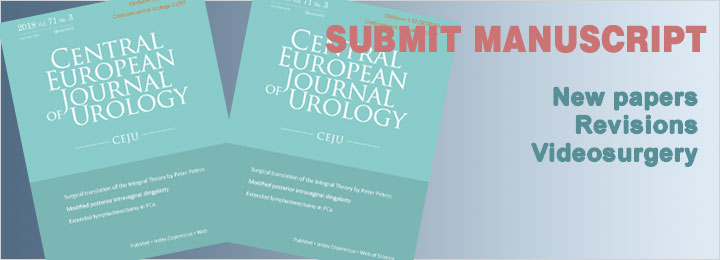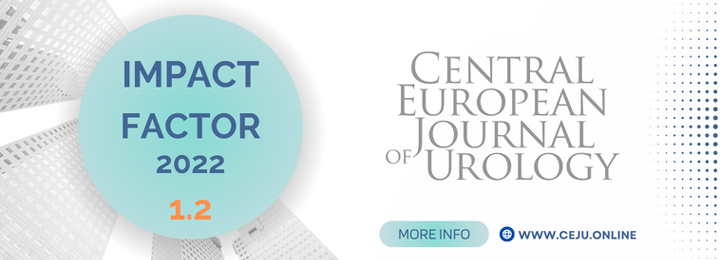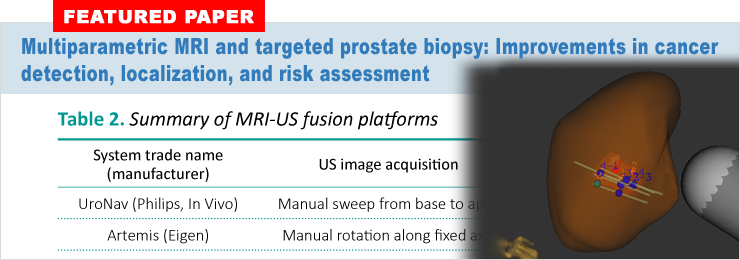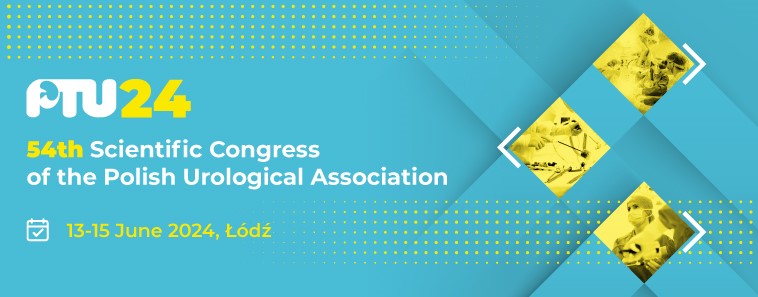|
Yasemin Yumusakhuylu, Cihat Kurt, Belgin Erhan
Issue:Ahead of print
Published on-line:Mar 17, 2024
| |
Marco Carilli, Riccardo Bertolo, Matteo Vittori, Valerio Iacovelli, Michele Antonucci, Francesco Maiorino, Marta Signoretti, Filomena Petta, Pierluigi Bove
Issue:Ahead of print
Published on-line:Apr 07, 2024
| |
Luca Antonelli, Adrian Duss, Leutrim Zahiti, Agostino Mattei, Christian Daniel Fankhauser
Issue:Ahead of print
Published on-line:Mar 15, 2024
| |
Peter Petros
Issue:Ahead of print
Published on-line:Apr 09, 2024
| |
Evangelos N. Symeonidis, AsteriosSymeonidis, Anastasios Anastasiadis, Aris Kaltsas, Georgios Tsampoukas, IoannisMykoniatis, DimitriosMemmos, ChrysovalantisToutziaris, FotiosDimitriadis, IoannisVakalopoulos, Georgios Dimitriadis
Issue:Ahead of print
Published on-line:Feb 28, 2024
| |
Eleni Konstantinidou, Vasileios Sakalis, Marina Kalaitzi, Ioannis Charalampous, Mytilekas Konstantinos-Vaios, Mikos Themistoklis, Dimitrios Hatzichristou, Apostolos Apostolidis
Issue:Ahead of print
Published on-line:Feb 28, 2024
| |
Mohammed Abdel-Rassoul, Galal El Shorbagy, Sameh Kotb, Ahmed Alagha, Samih Zamel, Ahmed M Rammah
Issue:Ahead of print
Published on-line:Mar 15, 2024
| |
Silvia Proietti, Salvatore Di Pietro, Mon Mon Oo, Stefano Gisone, Riccardo Scalia, Franco Gaboardi, Guido Giusti
Issue:Ahead of print
Published on-line:Feb 25, 2024
| |
Umberto Carbonara, Constantinos Adamou, Danny Darlington Carbin, Dimitrios Papadopoulos, Gerasimos Fragkoulis, Danielle Whiting, Murthy Kusuma, James Hicks, Dimitrios Moschonas, Krishna Patil, Matthew James Alexander Perry, Wissam Abou Chedid
Issue:Ahead of print
Published on-line:Feb 28, 2024
| |
Fajar Gemilang Ramadani, Noor Riza Perdana, David Ralph Lienhardt Ringoringo
Issue:Ahead of print
Published on-line:Mar 15, 2024
| |
Vytis Kazlauskas, Ramune Zilinskaite-Tamasauske, Povilas Barasa, Natalija Krestnikova, Darius, Dasevicius, Vytautas Bilius, Gilvydas Verkauskas
Issue:Ahead of print
Published on-line:Feb 25, 2024
| |
Mohammad Shazib Faridi, Sanika Deshpande
Issue:Ahead of print
Published on-line:Feb 25, 2024
| |
Daniela Franco-Buenaventura, Herney Andrés García-Perdomo
Issue:Ahead of print
Published on-line:Feb 25, 2024
| |
Breno C. Porto, Mikhael Belkovsky, Giulia V. Zogaib, Carlo C. Passerotti, Everson L. A. Artifon, Jose P. Otoch, Jose A. S. Da Cruz
Issue:Ahead of print
Published on-line:Feb 11, 2024
| |
Mustufa Babar, Max Abramson, Kevin Labagnara, Justin Loloi, Hasan Jamil, Rahman Sayed, Kevin Tang, Matthew Ines, Sandeep Singh, Nazifa Iqbal, Michael Ciatto
Issue:Ahead of print
Published on-line:Feb 11, 2024
|
|
Central European Journal of Urology (CEJU) is indexed in: PubMed, Emerging Sources Citation Index (Thompson Reuters), Chemical Abstracts CAS, Cambridge Scientific Abstracts (ProQuest), CAB Abstracts, CrossRef, EBSCO, Google Scholar, Index Copernicus (129.07 pts), Global Health Databases, SCOPUS and the Polish Medical Library (GBL), Ministry of Education and Science (70 pts), Impact factor (1.2) eISSN: 2080-4873 Publisher and funding institution Polish Urological Association |
